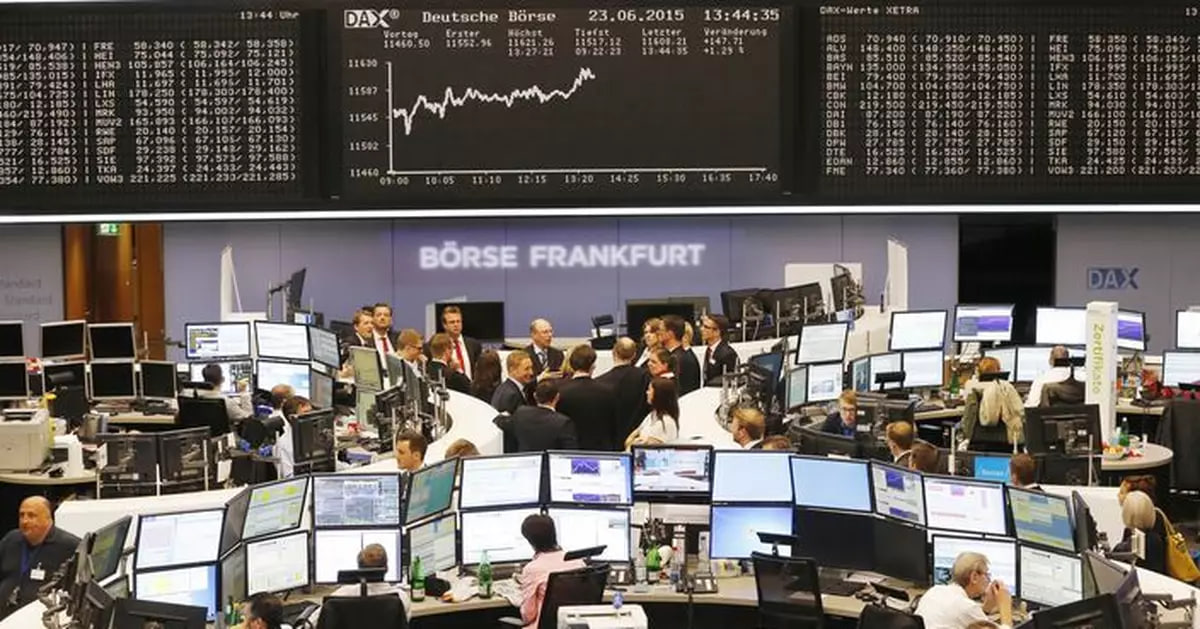Europe's Energy Diversification: A Deep Dive into LNG Imports from the US
Meta Description: Navigating Europe's energy crisis: a comprehensive analysis of increased LNG imports from the US, exploring economic implications, geopolitical shifts, and future energy security strategies. Keywords: European energy crisis, LNG imports, US LNG exports, energy diversification, energy security, geopolitical implications, economic impact, Christine Lagarde, European Central Bank.
Imagine this: a continent grappling with an unprecedented energy crisis, scrambling for reliable sources of fuel to keep the lights on and industries humming. This isn't some dystopian fiction; it's the reality Europe faced (and, to some extent, still faces). The war in Ukraine brutally exposed Europe's dependence on Russian natural gas, sending shockwaves through economies and forcing a radical rethink of energy strategies. Enter the United States, a burgeoning LNG (Liquefied Natural Gas) powerhouse, ready to fill the void. Christine Lagarde, President of the European Central Bank (ECB), has openly suggested increased LNG purchases from the US – a pivotal moment in the reshaping of the European energy landscape. But is this a panacea, a temporary fix, or something more substantial? Let's delve into the complexities.
The Surge in US LNG Exports: A Lifeline for Europe?
The current geopolitical climate has dramatically altered the energy map. Russia's actions have not only created an energy crisis but also accelerated a global shift towards energy diversification. The US, with its abundant shale gas reserves and advanced LNG export infrastructure, has stepped up to become a major supplier. This wasn't always the case. Just a few years ago, the US was a net importer of natural gas. Now, it's a global LNG exporter, and Europe is its biggest customer. This dramatic turnaround speaks volumes about technological innovation, market dynamics, and – let's face it – geopolitical necessity. But this shift isn't without its challenges and nuances.
The immediate impact of increased US LNG imports has been a reduction in price volatility, at least partially. Remember those sky-high energy prices in 2022? While LNG from the US isn’t a magic bullet, it has certainly helped stabilize the market, though prices remain historically elevated. Furthermore, the swift increase in supply chains highlights the flexibility and adaptability of the global energy market – a valuable lesson learned during this chaotic period. However, the long-term implications are far more intricate.
Geopolitical Ramifications: A New Energy Axis?
The increased reliance on US LNG has significant geopolitical implications. It’s forging a stronger energy partnership between the US and the EU, bolstering transatlantic ties at a critical juncture. This new energy axis isn’t just about economics; it's about strategic alliances, mutual security, and a shared vision for a more stable and diversified global energy system. This shift is a significant departure from Europe's past reliance on Russia, underscoring the importance of diversifying energy sources to reduce dependence on any single supplier. Think of it as a major foreign policy shift, one potentially shaping global power dynamics for years to come. Naturally, this also has consequences for Russia, further isolating them on the world stage.
However, the increased reliance on US LNG also raises concerns about potential vulnerabilities. Any disruption to transatlantic shipping lanes, for example, could severely impact Europe's energy supply. This emphasizes the importance of developing robust, resilient, and diversified energy infrastructure, both within Europe and globally. No single source, no matter how reliable it seems today, should be the sole pillar of a continent's energy security.
Economic Impacts: Weighing the Costs and Benefits
The economic implications of increased US LNG imports are multifaceted. While it's helped stabilize energy prices, the cost of LNG remains significantly higher than pipeline gas (before the war, at least). This increased cost ultimately impacts consumers and businesses, potentially slowing economic growth. However, the economic benefits of energy security outweigh the short-term costs. A stable energy supply is crucial for economic stability and long-term growth. Investing in energy independence is an investment in the future. Moreover, the increase in trade between the US and EU leads to economic growth on both sides of the Atlantic, strengthening the global economy. But, we need to consider the environmental impact as well, which brings us to our next point.
Environmental Considerations: A Necessary Trade-Off?
The environmental impact of LNG is a critical consideration. While natural gas is a cleaner-burning fossil fuel than coal, it still contributes to greenhouse gas emissions. The production, transportation, and use of LNG all have environmental footprints. Therefore, the increased reliance on LNG as a transitional fuel should be viewed with some caution. While it offers a more immediate solution to the energy crisis compared to rapid deployment of renewables, it's crucial to accelerate the transition to cleaner, renewable energy sources. This requires significant investment in renewable energy infrastructure and technologies, as well as policy support to encourage a swift shift. Europe must walk a fine line: meeting immediate energy needs while simultaneously investing heavily in a sustainable future.
The Future of European Energy: A Multifaceted Approach
The future of European energy security hinges on a multi-pronged strategy. Increased LNG imports from the US provide a crucial bridge to a more sustainable future. However, it's not a long-term solution. The continent needs to massively invest in renewable energy sources like solar, wind, and geothermal energy. Furthermore, improving energy efficiency through smart grids and energy-efficient technologies is paramount. Diversification of energy sources, both geographically and technologically, is crucial to ensure resilience against future shocks. This includes exploring alternative sources, investing in energy storage solutions, and strengthening international energy partnerships.
Frequently Asked Questions (FAQs)
Q1: Is the US the only solution to Europe's energy needs?
A1: No, the US is a significant supplier, but Europe is diversifying its sources, including exploring LNG from other countries, along with accelerating renewable energy development.
Q2: How long will Europe rely on US LNG?
A2: That depends on several factors, including the speed of renewable energy deployment and geopolitical developments. It’s likely to be a significant player for the foreseeable future, serving as a bridge to a lower-carbon future.
Q3: What are the environmental concerns with increased LNG imports?
A3: While cleaner than coal, LNG still produces greenhouse gasses. This underlines the urgency of transitioning to renewable energy sources.
Q4: How does this affect the price of natural gas in Europe?
A4: Increased US LNG supplies have helped stabilize prices, although they remain higher than pre-crisis levels. Price volatility is still a concern.
Q5: What role does the ECB (European Central Bank) play in this?
A5: The ECB's role is primarily focused on economic stability. While not directly involved in energy policy, its actions affect the economic climate, which in turn influences the energy market.
Q6: What are the geopolitical risks associated with increased reliance on US LNG?
A6: Potential disruptions to transatlantic shipping, or changes in US foreign policy, could impact Europe's energy supply. Diversification is key to mitigating these risks.
Conclusion: A Pivotal Moment in European Energy History
The increased purchase of US LNG is a pivotal moment in European energy history. It's a testament to the adaptability of the global energy market and a strategic shift away from over-reliance on a single supplier. While LNG offers a crucial transitional fuel, the long-term solution lies in a rapid transition to renewable energy and a diversified energy mix. The path forward requires significant investment, international cooperation, and a commitment to building a more sustainable and secure energy future for Europe. The challenges are immense, but the opportunity to build a more resilient and environmentally conscious energy system is equally significant. The future of European energy is being written now, and it's a story that will continue to unfold for years to come.



